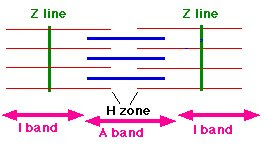Page 579:
Critical Thinking Questions
6) If a woman whose blood is Rh-negative and contains anti-Rh antibodies is carrying a fetus with Rh-negative blood, will the fetus be in danger of developing erythroblastosis fetalis? Why or why not?
The fetus would not be in danger because its blood cells are not going to be attacked by anti-Rh(+) antibodies. This is because the baby has Rh(-) blood cells which are safe from anti-Rh(+) antibodies.
Review Exercises
3) Describe a reb blood cell.
They are bioconcave disks, due to the fact they get rid of their nuclei as they mature. This increases the space which gases can use to diffuse into the cell. It also brings toe gases closer to the hemoglobin in blood.
6) Desribe the life cycle of a red blood cell.
At first, a stem cell in the bone marrow becomes a Proerythroblast. This new cell then becomes a erythroblast. Next, the erythroblast turns into a Normoblast. After that, it becomes a reticulocyte. Finally, the reticulocyte becomes a erythrocyte after it enters the blood stream. The blood cell then carries out its functions for about 2-4 months then dies from wearing out and becoming less active.
10) List two sources of iron that can be used for synthesis of hemoglobin.
Some of the iron that comes from the decomposition of hemoglobin can be reused, but we must obtain a certain amount each day due to the small loss in the cells. This can come from cereal or pills that contain iron.
14) Describe a blood platelet, and explain its functions.
Platelets are not complete cells. They come from very large cells called megakaryocytes that fragment a little like a shattered plate, releasing small sections of cytoplasm (platelets) into the circulation. Platelets help repair damaged blood vessels by sticking to broken surfaces. they release serotonin, which contracts smooth muscles in the vessel walls, reducing blood flow.
18) Distinguish between low-density lipoprotein and high-density lipoprotein.
Low-density lipoproteins have a relatively high concentration of cholesterol as to high-density lipoproteins which have less cholesterol and a high concentration of proteins.
27) List the major steps leading to the formation of a blood clot.
Breaks in a blood vessel can trigger clotting mechanism. This makes it so eventually fibrinogin converts to fibrin and a blood clot occurs.
38) Explain why a person with blood type AB is sometimes called a universal recipient.
People with AB type blood have neither anti-A of anti-B antigens and can receive any type of blood in a transfusion.
39) Explain why a person with blood type O is sometimes called a universal donor.
People with O-type blood are called universal donors because they lack A and B antigens.









